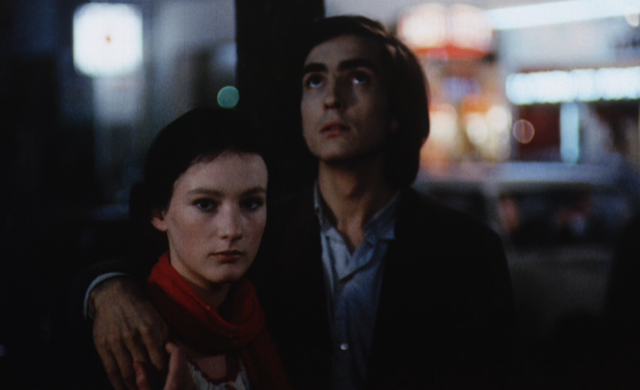Criterion Prediction #202: Four Nights of a Dreamer, by Alexander Miller

Title: Four Nights of a Dreamer
Year: 1971
Director: Robert Bresson
Cast: Isabelle Weingarten, Guillaume de Forêts, Maurice Monnoyer
Synopsis: When Jacques hitchhikes to Paris he encounters Marthe, a young woman about to throw herself off of a bridge. After Jacques successfully talks her off the ledge they spend their following nights together, wandering about and developing a unique bond.
Critique: Four Nights of a Dreamer has the unique distinction of being one of Bresson’s (alleged) lighter efforts and for someone as acerbically terse and aesthetically disciplined, that’s not the most resounding endorsement. But in some regards its an appropriate moniker; in contrast to Bresson’s consolidated but specific canon, Four Nights of a Dreamer stands at some distance from the director’s other works. Never a stranger to dense literary influence, Bresson returns to the work of Dostoyevsky, whose Old Testament-style fatalism is a consistent thread that ties the work of the two artists together. Looking at Dostoyevsky’s work, the short stories that are usually lumped together (“Notes From Underground,” “Dreams of a Ridiculous Man” and, of course, “White Nights” are usually published together) are not only less dense in volume but maintain a markedly different tone than his novels. With “White Nights,” there’s an actual tone of joy and romance. The haughty misanthropy that populates The Brothers Karamazov or Crime and Punishment isn’t lurking over the narrative and this relative change in tone is visible throughout the entirety of Four Nights of a Dreamer.
Transplanting the story to the city of light and Bresson’s penchant for casting non-actors, or “models” as he called them, lends the film a low-key whimsy. Paris begins to take on this implacable otherness. Bresson’s incisive aesthetic and deliberate framing give the already mythic Parisian locale a nocturnal vigor and air of mystery. Marthe and Jacques share moments of intimacy but, in the director’s tradition of disassociative dissection-through-editing, their glances are through windows and shop displays. And their bodily contact, shown in static compositions of limbs, elevates the interactions, almost inviting the viewer into their affair in a non-perverted form of voyeurism. The saturation of the photography deepens the contrast of night and day. Instead of the overwrought “city as a character” analysis, it’s actually the nighttime that plays a pivotal part. The conventional artifice of day-for-night lighting is absent and Bresson leans into the naturalistic rendering with maximum effect. Obfuscated lights become orbs that hover in the background. The murkiness is inviting and, in a most unforgettable instance, a passing ship rolling down the Seine becomes an ethereal vessel of fulgent mystique. Out of Bresson’s models, de Forêts’ gangly screen presence serves as one of the more memorable. His angular features and pronounced eyebrows seem in line with the director’s taste in leads. Weingarten’s Marthe has a cherubic appeal and social detachment contributing to her hushed allure.
Why It Belongs in the Collection: There’s a body of Bresson’s later work–The Devil Probably, A Gentle Woman, Lancelot du lac, The Trial of Joan of Arc–that are all equally deserving of a Criterion release. After the release of his final feature L’argent in the summer of 2017, many were awakened to the artistic vigor that precipitated in his later years. With some other region’s Blu-ray restorations of these aforementioned films, it would feel criminal if they arrived in anything that doesn’t have a spine number.


























